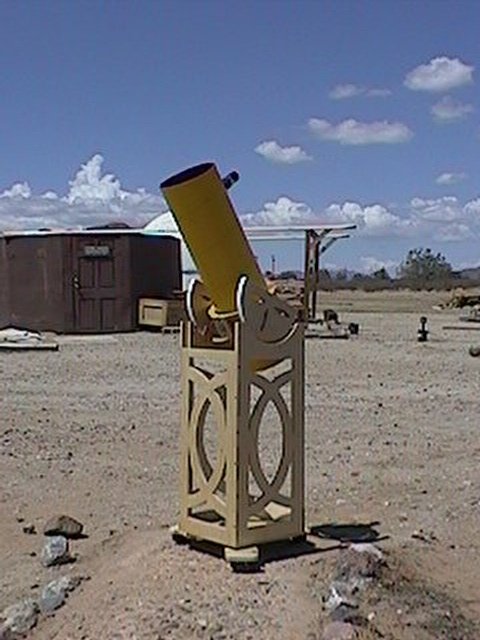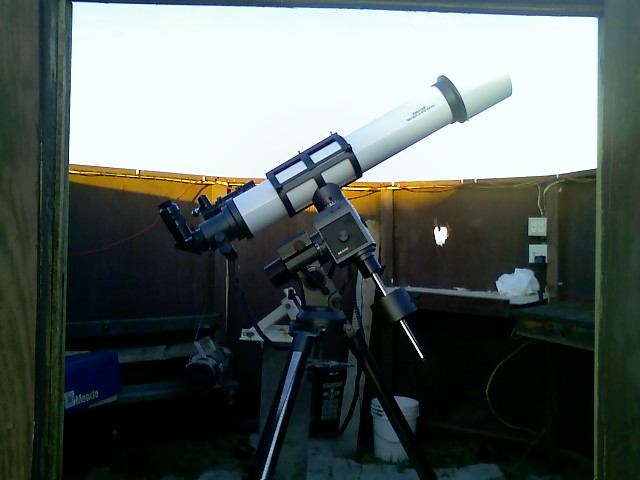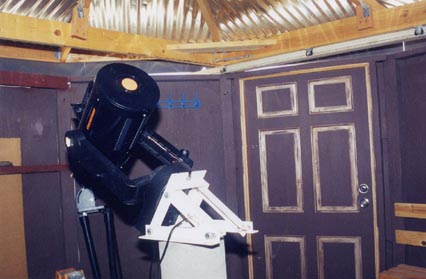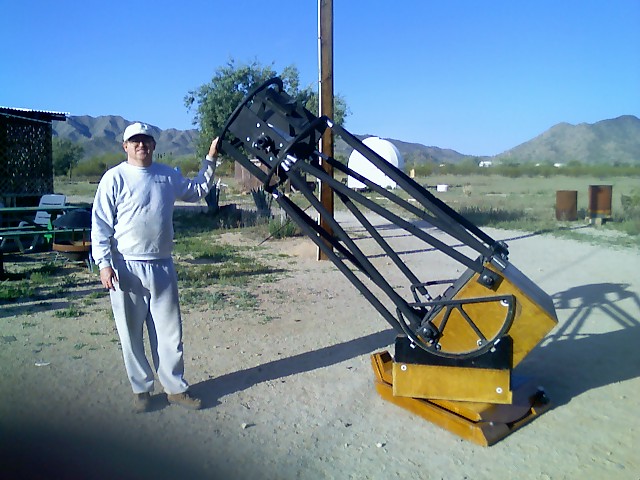Advice for the Novice
As Chairman of the Novice Group for the Saguaro Astronomy Club, it's my duty and pleasure to introduce newcomers to the wonderful hobby of astronomy. Most are drawn by the amazing pictures coming out from the Hubble Space Telescope, (HST), Switzer Space Telescope, (SST), Keck Observatory, and all the other huge, ground-based telescopes around the world. This is both good and not so good because when a person takes their first look through a real telescope, they can sometimes be disappointed by the lack of color or detail they perceive. It takes a certain amount of un-learning to get past this at first. That's where some contact with someone more experienced comes in!

There's lots to learn to get the most out of this hobby, and there's just about as many places to end up as there are areas of astronomy as a profession. You see, just about anything that can be done by professionals these days can also be done by amateurs. With the advancements in camera technology, computer tracking telescopes and organizations dedicated to interfacing between amateurs and pros, it makes it possible to contribute to the overall knowledge of anyone.

When I have a novice visit me at Stone Haven Observatory, I set up several telescopes. Both to demonstrate how they work and differ and to explain the advantages and drawbacks of each type. I have a refractor, several Newtonians and a couple Schmidt Cassegraines, (kind of a combination of both). I'll show people what charts look like, recommend the Cambridge Sky Atlas 2000 as a good start, basically going through it to show the features and how much information is available. I'll answer questions all along.

Once it's dark, I'll select several of the brighter objects in the sky that night and show them in each of the scopes so you can get a feel for each one's capability. Side-by-side comparisons are, I think, the best way to really see the differences. One of the scopes I'll include, (but later on), is my 20" Dobsonian mounted Newtonian. It brings in a lot of light, so you can really see what's possible.

I can answer most questions about astrophotography, though I'm not a real expert. The extent of my imaging is limited to basic processing for scientific use, but I can refer you to several great imagers within our club and elsewhere. I figure, I can hold my own for what a novice might want to know.
If you have an interest in learning the sky, what telescope to buy, how they work, what to expect when you look through the telescope, how do you find all the stuff that's up there, drop me a line. I run the Novice Group as a convenience to the novice. Generally, the regular Club meeting is held on the Friday closest to the full Moon. (You can check the S.A.C. website for details.) I like to hold meetings at Stone Haven the weekend after the meeting. The Moon will generally come up fairly early, so there's not too much darkness, but there's enough to see some deep sky stuff, as well as the Moon if you'd like to stay a little later. But, if you're free during the week sometime, we can arrange that, too. In a worst case, I could even come to you, but there would be less telescopes to see. Or, if you live up on the north side of town, there are a number of other club members that live up there that are willing to help out, too.
So what are you waiting for? Feel free to email me or give me a call!
Steve Dodder
Chairman, S.A.C. Novice Group
Coordinator, Grand Canyon Star Party, North Rim
fester00@hotmail.com
Cell: 602-390-0118
